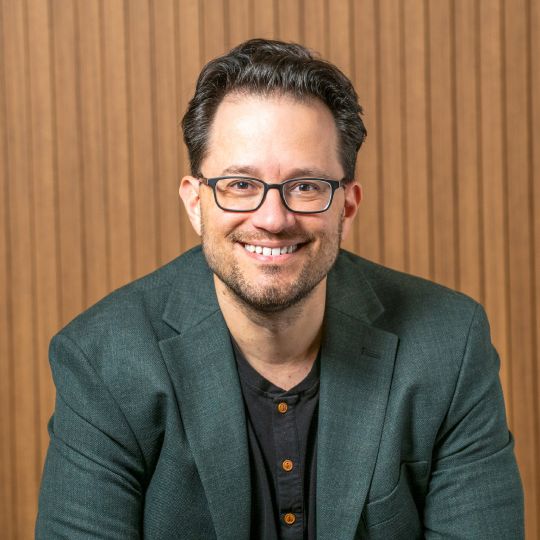Can you build and deploy critical training in less than 10 days?
Do you think you could have benefitted from this training when you first started wearing a mask in public?
“Communicating While Wearing a Face Mask” remains available to over 3 million people worldwide and includes 2 videos, 3 sets of reinforcement questions and an infographic.
The Axonify Content Marketplace features 500+ frontline-focused microlearning topics!
Here’s how we launched this critical training to employees around the world in less than 10 days.
Step 1: Ideation (1 day)
The process started with a conversation on a Wednesday in early May 2020. Our content team had already deployed training on basic virus prevention tactics, such as proper handwashing and sanitization, as part of our #FrontlineForward commitment. We then started to examine the second order impacts of enhanced safety practices on frontline performance and quickly identified communication as a critical consideration. Mask mandates had recently gone into effect around the world, and employees were being forced to relearn how to engage customers without the aid of facial expressions. This was especially timely as employees and customers were introduced to new ways of doing business, including contactless payment and curbside pickup.
We prioritized the development of the “Communicating While Wearing a Face Mask” content topic on Day 1.
Step 2: Research (2 days)
On Day 2, we validated the concept with our subject matter experts (SMEs) in retail and grocery. We had to be sure employees would benefit from the training before we built anything. At the same time, we researched established methods for communicating while wearing a mask. We curated open-source information created both before and during the pandemic. We then selected the most relevant frontline practices and, after receiving SME input, began development.
Step 3: Development (5 days)
By Day 4, a pair of instructional designers (IDs) had already begun working on the content. First, they built a training plan that identified key learning points, or specific behaviors, we wanted to impact through digital training. This helped them keep the content brief and focused on only required knowledge. Then, while one ID developed reinforcement questions based on the plan, another developed the media assets. The team had already transitioned to working from home, so all of this had to be done without heavy equipment. Videos were shot on iPhone. Family members stepped into on-screen roles. After all, the goal was to create useful content quickly, not win an Oscar for cinematography.
Step 4: Deployment (1 day)
On Day 10, we uploaded the new content to our Marketplace Essentials Library for customer access. The final content focused on foundational communication skills. Organizations could then customize or augment the training to include their proprietary standards. It took four people less than two weeks to get important training into the hands of frontline employees. From there, organizations just had to turn it on as part of their daily reinforcement training.
Over the past ten months, the global Axonify community has answered 21 million reinforcement questions on this and 20 other pandemic-related topics. More importantly, knowledge on these critical topics has increased by up to 21%.
Building content agility
“Communicating While Wearing a Face Mask” is an example of training that usually doesn’t get the opportunity to exist. The workplace is constantly changing. There’s always a product release coming up or a process adjustment in the works or a compliance requirement that’s almost due. L&D has limited capacity to build training. Employees have limited time to complete it. This often results in training that covers only the basics, such as how to wash your hands and put on a mask. Nuanced topics that can really make a difference for your employees and organization often don’t get covered because you run out of resources and have to move on to the next big thing.
Curation is the key to content agility. L&D can’t build custom solutions for every performance challenge. Therefore, organizations must adopt a curation mindset and source the right content from the right sources. This includes content partners, such as the Axonify Content Marketplace, as well as user generated content. To apply a curation approach to training, ask yourself three questions:
- Is the topic and/or application of knowledge and skill unique to our organization? Then build it.
- Has a trustworthy partner already solved the problem, making it more efficient to leverage their expertise? Then buy it.
- Is the topic general enough to leverage open resources and crowdsourced knowledge? Then borrow it.
A Build/Buy/Borrow framework will help you keep pace with business change while providing timely, right-fit solutions. Rather than stopping at just the basics, you can provide detailed solutions that help employees elevate their performance and differentiate your brand, even during the most challenging circumstances. Identify trusted partners who can help you close foundational knowledge and skill gaps. Then, leverage your own resources to address more complex and proprietary issues. But remember—content alone does not solve performance challenges. Employees also need support, practice and coaching to develop their skills. That said, great content can establish a solid knowledge base and set your employees on an accelerated path to improved performance.
The Axonify Content Studio team is proud to have the opportunity to help organizations grow their content agility and provide right-fit solutions to their frontline workforces. In doing so, we’ve helped companies cut down their training implementation time from months or weeks to days. We’ve built 180 topics over the past year in partnership with more than 100 companies. Today, our Content Marketplace includes videos, job aids and reinforcement activities on more than 500 unique topics, everything from picking produce in the grocery store to advising customers on the proper way to wash their new jeans. And we’re still just getting started.
What if you could design, develop and deploy training in less than 10 days? How would this help you close critical skills gaps in your organization?
Be safe. Be well. Be kind to the frontline.

